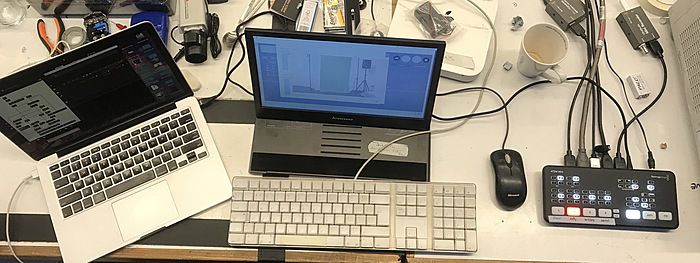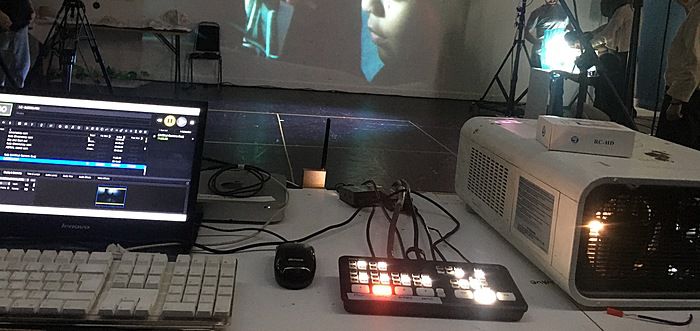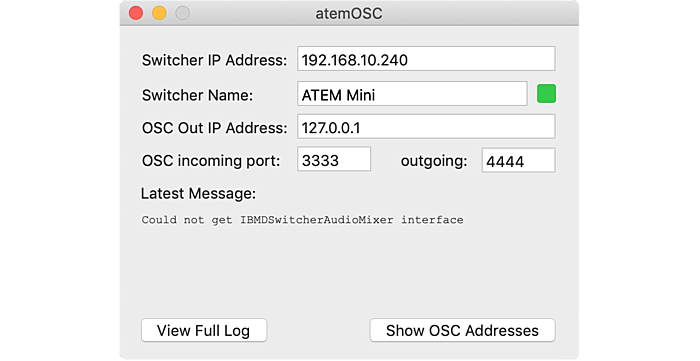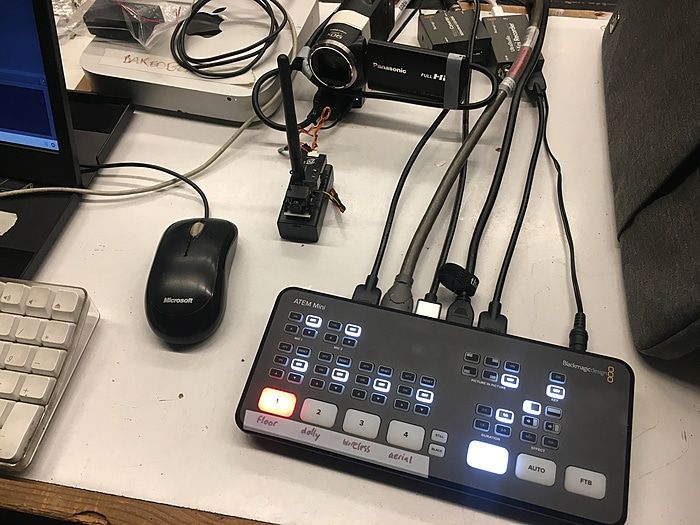ATEM Mini, QLab and OSC
This is a 🤓 post about equipment in theatre.
Being a fan of Blackmagic Design equipment*, I had very high expectations for their new ATEM Mini switcher. Looking at the marketing material they’ve put together for this thing makes it clear how Blackmagic have done their homework in terms of how they’re pitching themselves and their products. Gone is the idea of the prosumer, replaced with a new type of professional - operating out of their home studio or office, producing excellent content and streaming it on the web to their audience, investors and fans.
The ATEM Mini is a live production switcher with 4 HDMI inputs. It has a HDMI main output but can also appear as a standard HD webcam to a desktop OS making it perfect for streaming productions. Between it and the desktop ATEM application, it is essentially a fully featured vision mixer with upstream and downstream keying, fade-to-black, transitions, audio-follow-video and mixing.
*Thankfully their equipment makes up for them being completely boring, crap and dismissive at their stand at SXSW 2018 :( Meanwhile, the now defunct Digital Bolex crew were fun, helpful and sound. Maybe there’s a moral here, I hope not.
While I don’t personally have an audience, investors or fans, I did see an opportunity for the ATEM Mini as a useful piece of kit for small to mid-range theatre productions. It turned out to be a perfect match for a stage adaptation of Gulliver’s Travels at London’s Unicorn Theatre. Unfortunately, the production has been put on ice due to Covid19 before opening, but I’m confident it will open before the year is out.
The video design for Gulliver’s Travels was centred around the use of live cameras - three wireless cameras (more on these soon) and two wired cameras. The budget meant only having two camera inputs to QLab ( via two Blackmagic Ultrastudio Mini Recorders), so a switcher of some sort was required to switch between the other cameras.
One of the main reasons I chose the ATEM Mini was because of a small open source application called atemOSC by Daniel Buechele, the existence of which is proof that providing a quality SDK for your hardware is a very good thing for a manufacturer to provide.
atemOSC serves as a bridge between an OSC enabled application - like QLab - and the ATEM Mini hardware. While I’m glad for atemOSC, it is a little surprising / disappointing that something like the ATEM Mini doesn’t natively support OSC.
The ATEM Mini can receive network commands via IP (it has an ethernet port) or USB. Once atemOSC is configured, sending commands to the ATEM from QLab is very easy.
Once you’ve hooked up your ATEM either via USB cable or ethernet (direct from computer or through a network switch) atemOSC should detect it automatically - populating the IP address field and turning the small coloured square by ‘Switcher Name’ green. Any issue here is most likely down to network settings.
To control your ATEM from QLab, simply set it up as a network device:

- using 127.0.0.1 or localhost for destination and 3333 (or whatever you choose as the incoming port in atemOSC. The name can be whatever label you want to use within QLab.
Now simply add some network cues in Qlab, targeting your newly defined networked ATEM.
/atem/program/1
or /2, /3, /4 to instruct the ATEM to switch to channels 1 - 4.
and pleasingly:
/atem/program/0
to go to black.
A full set of commands available over the API are listed here.
The beauty of all this is that with the addition of this cheap, solid device, you can have four HDMI inputs available to something like QLab with complete programmatic control over the hardware. You can even offload some of the live processing to the ATEM like dissolves and chromakeying, making this a great solution for underpowered computers.
The ATEM Mini is also super easy to set up - auto converting inputs to the standard used by the first connected input, which is incredible useful. This can also be overridden in settings through the desktop app.





